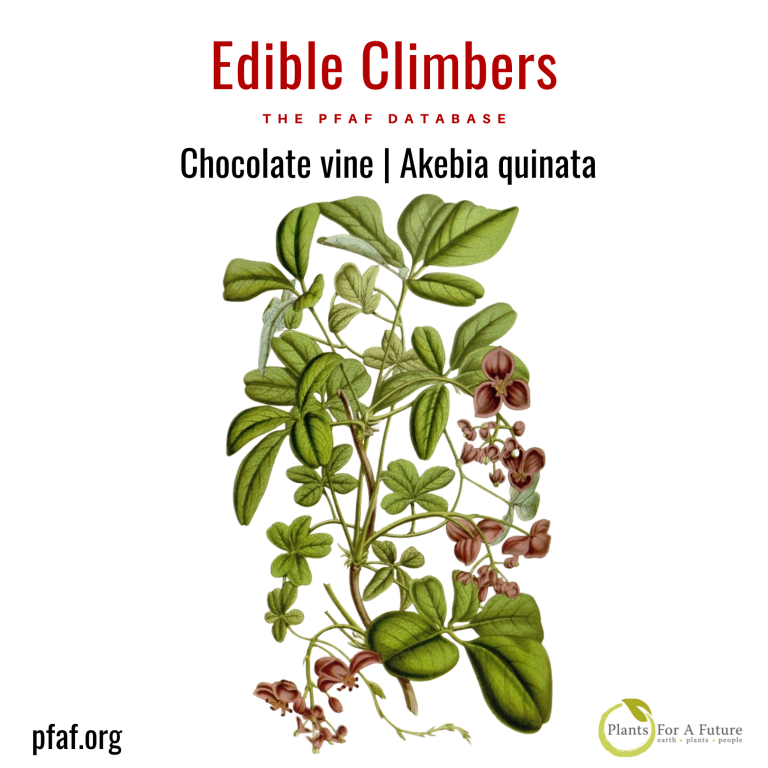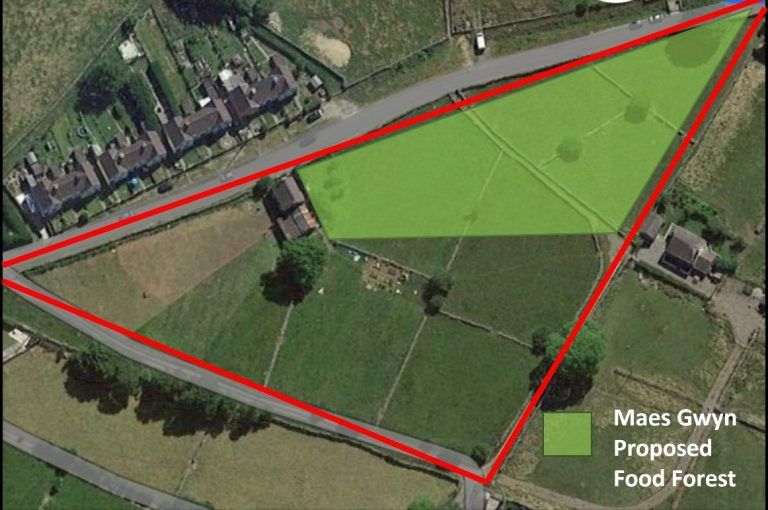Akebia species are vigorous twining, semi-evergreen climbing shrubs with edible fruit available in autumn. Chocolate Vine (A. quinata), growing to 12m (40ft) or more, twines into trees and shrubs. It is very amenable to trimming in early spring. The root pattern is branching from the crown into several primary roots and can sucker. Unsupported chocolate vine scrambles over the ground, the branches rooting into the earth and making an adequate ground cover amongst taller plants. It requires a well-drained moisture retentive soil and will succeed in acid or alkaline conditions. Whilst the dormant plant is hardy to about -20°C/-4°F, the young growth in spring, even on mature plants, is frost-tender, so it is best to grow the plants in a sheltered position from the early morning sun.
Is Akebia, Chocolate Vine Edible?
The fruit can be 5-10cm (4in) long and has a delicate flavour and a soft, juicy texture. There are two other genus members with similar growth habits and use Three Leaf Akebia (A. trifoliata) and A. x pentaphylla, also known as the Chocolate vine. Three leaf akebia fruit has a delicate flavour and a soft juicy texture when eaten raw. Enhance the flavour with a little lemon juice. The dried young leaves of all three species make an acceptable tea substitute.
Propagation: Seed, cuttings or layering
Other Uses
• Groundcover • Self-sterile • Scented
In the PFAF Database
- Chocolate vine A. quinata
- Chocolate vine A. x pentaphylla
- Three Leaf Akebia A. trifoliata







